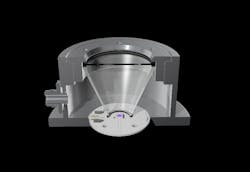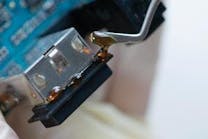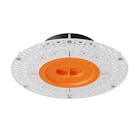UV-C LED as a possible weapon against SARS-COV2 - Lumitronix provides solutions for use under real conditions
As an official distributor of Nichia in Europe, the Hechingen-based LED company Lumitronix offers access to one of the most powerful UVC LEDs on the market. The NCSU334A emits a wavelength of 280 nm in the ultraviolet range, especially in the UV-C band, and thus enables immediate sterilization and cleaning of air, liquids and surfaces. Bacteria, germs and viruses can be reliably killed in this way. This means that the UV LED from the world's largest LED manufacturer can also act as a possible weapon against the novel coronavirus.
According to Nichia, the NCSU334A, which measures only 6.8 x 6.8 mm, delivers one of the best performances in the solid-state lighting (SSL) sector with 55 mW (at a current of 350 mA). In addition, the NCSU334A uses a newly developed, hermetically sealed housing that makes the LED less susceptible to external environmental influences, thus enabling it to be used in various harsh environments.
At Lumitronix, the disinfecting light emitting diode is available in various versions: as a component for later assembly, preassembled on an aluminium board measuring 30 x 30 mm and in a hermetic spot housing with a quartz glass reflector, which enables a particularly narrow beam angle of 13.5° and offers permanent UV stability thanks to the highest possible transmittance. The housing is made of stainless steel and is therefore antibacterial and permanently insensitive to UV radiation. It can also be easily cleaned. Due to the complete tightness of the spotlight, the extreme temperature stability of the materials used and the fact that the construction does not require any additional cooling, it can be used in ambient conditions of up to 100° C without any problems.
This opens up a wide range of possibilities for potential users to take advantage of the sterilizing properties of the NCSU334A.
Ultraviolet radiation in the wavelength range from 200 - 400 nm has an extremely destructive effect on organic and inorganic tissue. It can lead to inflammation of the cornea of the eye or to UV erythema (sunburn) of the skin. Materials that are exposed to ultraviolet radiation for too long begin to decompose. It is therefore extremely important that the light of the highly efficient NCSU334A LED does not come into contact with people and is only used for a short period of time on objects that require sterilization.
The Swabian LED specialist has addressed this problem and developed a concept for the safe operation of UV-C LEDs. "A combination of button, switch, motion sensor and three signal LEDs ensures the room in which the NCSU334A is to provide a sterile environment is free of people. The UV LED can only be activated via the switch if the motion sensor registers no more movement after 60 seconds, if the button is activated by closing the door and if all safety conditions are fulfilled by means of a green signal LED," reports Christian Hoffmann, CEO of Lumitronix.
All of the solutions offered by Lumitronix are aimed at professional users who are familiar with ultraviolet radiation and can ensure that UV-C LEDs are used without risk.For further information about the various solutions and samples of Nichia's new UV-C LED, please contact Lumitronix, the official Nichia distributor in Europe.
Contact:
Lumitronix LED-Technik GmbH





